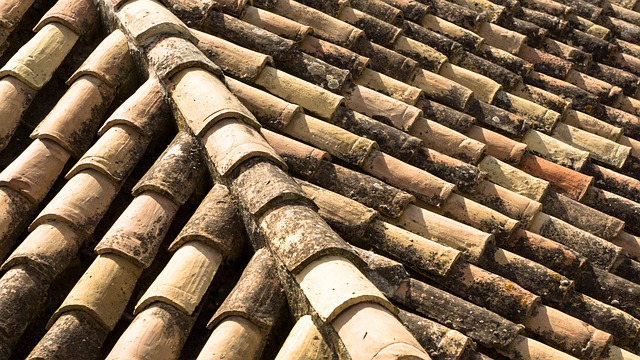Roof leaks, often unnoticed, cause severe property damage. Advanced roof leak detection technology uses tools like infrared imaging and moisture meters for swift identification, preventing structural instability, insulation compromise, and mold growth within 24-48 hours. Traditional methods like visual inspections and sound listening are limited, while modern tools like thermal imaging cameras and radar systems offer precise solutions. Choosing the right roof leak detection technology based on ease of use, range, accuracy, and cost is key. Regular maintenance, including routine inspections and DIY checks, ensures early leak identification and prompt repairs to prevent damage.
Roof leaks are a common yet serious issue that, if left unaddressed, can lead to significant structural damage and mold growth. Understanding the early signs and causes is crucial for prompt action. This article delves into the world of roof leak detection, exploring traditional methods and modern technology. We provide tips on choosing the right tools and offer preventive maintenance advice for homeowners, emphasizing the importance of timely intervention to safeguard your home’s integrity.
Understanding Roof Leaks: Common Causes and Early Signs
Roof leaks can often go unnoticed, but understanding their common causes and early signs is crucial for prompt addressal. Some of the most frequent reasons include aging or damaged shingles, flashing issues around chimneys or vents, and deteriorated or missing caulk in joints and seams. Water intrusion may also result from poor drainage systems or obstructions that prevent water from flowing away from the roofline effectively.
Early signs of a roof leak can be subtle but significant. Look out for discolored or bubbled drywall, peeling paint, or distorted ceiling tiles—indicative of moisture accumulation. Additionally, musty odors and visible water stains on interior surfaces or even warped floors can signal a problem. Leveraging modern roof leak detection technology, such as infrared imaging and moisture meters, can aid in identifying leaks more efficiently, especially in hard-to-reach areas or under insulation.
The Impact of Delayed Action: Structural Damage and Mold Growth
Delayed action in addressing leaks can have severe consequences for properties, leading to significant structural damage and favorable conditions for mold growth. Roof leaks, if left undetected or untreated, can weaken the integrity of a building’s framework over time. Water penetration beyond the visible surface can erode wood, compromise insulation, and even cause rusting in metal components. These issues compound, leading to larger-scale structural instability and potentially costly repairs.
Moreover, moisture provides an ideal environment for mold spores to flourish. In as little as 24-48 hours, a leaking roof can create the perfect conditions for mold colonization. Mold growth not only compromises indoor air quality but also damages personal belongings and can have adverse health effects on occupants. Advanced roof leak detection technologies play a pivotal role in mitigating these risks by swiftly identifying leaks, enabling prompt action to prevent both structural deteriorations and hazardous mold infestations.
Traditional Detection Methods vs. Advanced Technology
In the past, identifying leaks in roofs or other hidden areas was primarily reliant on traditional methods such as visual inspections, listening for dripping sounds, or noticing water stains. These techniques, while effective to some extent, often failed to detect subtle or hard-to-reach leaks until significant damage had occurred. However, with advancements in technology, roof leak detection has revolutionized the way we approach these issues.
Today, advanced technologies like thermal imaging cameras and moisture meters offer more precise and comprehensive solutions for roof leak detection. Thermal imaging detects temperature variations, allowing professionals to pinpoint areas where water has caused heat loss or gain, thus revealing potential leaks hidden behind walls or in attics. Moisture meters, on the other hand, measure humidity levels and can quickly identify moist spots indicative of water intrusion. These modern tools provide faster, more accurate results, enabling prompt action to prevent structural damage and mold growth associated with prolonged water exposure.
Choosing the Right Tools: A Guide to Roof Leak Detection Devices
Choosing the right tools for roof leak detection is crucial in addressing potential structural damage and mold growth promptly. In today’s digital era, various roof leak detection technologies are available, each with its own strengths. From infrared thermal imaging cameras that can identify temperature variations indicating leaks to sophisticated radar-based systems that penetrate the roof surface, these devices offer accurate and non-invasive solutions.
Infrared cameras are particularly useful for visual inspection, while radar systems excel at detecting hidden leaks under shingles or other materials. Some advanced models even combine both technologies for comprehensive analysis. When selecting a roof leak detection device, consider factors like ease of use, range, accuracy, and cost. Professional-grade tools often offer higher precision but come with steeper price tags, whereas consumer-friendly options might be more affordable but may require additional expertise for proper installation and interpretation of results.
Preventive Measures: Maintenance Tips for Homeowners
Regular maintenance is key in preventing leaks and the subsequent damage they can cause. Homeowners should schedule routine inspections, especially in areas prone to leaks like the roof, plumbing, and windows. Using modern roof leak detection technology can help identify potential issues early on, allowing for quick repairs before water seeps into your home’s structure.
Simple DIY checks, such as examining pipes for corrosion or checking for moisture stains in the attic, can also be effective preventive measures. Additionally, ensuring proper ventilation in attics and crawl spaces prevents excessive heat and humidity, reducing the risk of mold growth, a common consequence of water leaks.
Addressing roof leaks promptly is key to preventing significant structural damage and mold growth. By understanding common causes, employing advanced roof leak detection technology, and implementing preventive maintenance tips, homeowners can safeguard their investments. Timely intervention can save thousands in repair costs and ensure a safe, healthy living environment. Incorporating regular inspections and utilizing modern tools like drones and infrared cameras makes identifying leaks easier than ever, empowering homeowners to stay one step ahead of potential issues.
